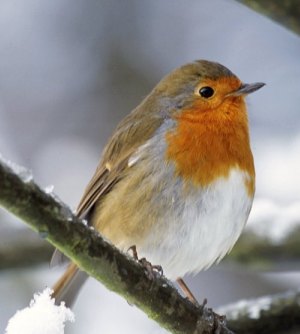Join the Big Garden Birdwatch
This coming weekend is the annual RSPB’s Big Garden Birdwatch, and it’s more important than ever in 2011


Garden birds need you. The annual Big Garden Birdwatch this weekend (on January 29-30) is of even greater significance this year as conservationists try to assess the effect of the coldest December for 100 years on smaller birds.
The RSPB will particularly be looking out for sightings of small-bodied birds such as the wren or long-tailed tit, which can struggle in freezing conditions. Other birds come off badly from competition at the bird table, and the survey can be a useful checklist for the balance of Nature.
During the last 30 years, the Big Garden Bird Watch has provided a useful snapshot into the rise and fall of common bird numbers. Most recently, starlings and house sparrows have showed a decline.
Last year, the most commonly seen bird was the blackbird, in 96.3% of gardens, followed by the robin and blue tit. The rarest sightings were of bramblings, stock doves, tree creepers and willow tits. About 20 species tend to be spotted per county, with a few regional variations for water birds and pheasant.
Birds recorded should be actually in the garden, in their highest numbers during a one-hour period, and not flying overhead. Visit the RSPB website for further information.
Sign up for the Country Life Newsletter
Exquisite houses, the beauty of Nature, and how to get the most from your life, straight to your inbox.
Country Life is unlike any other magazine: the only glossy weekly on the newsstand and the only magazine that has been guest-edited by HRH The King not once, but twice. It is a celebration of modern rural life and all its diverse joys and pleasures — that was first published in Queen Victoria's Diamond Jubilee year. Our eclectic mixture of witty and informative content — from the most up-to-date property news and commentary and a coveted glimpse inside some of the UK's best houses and gardens, to gardening, the arts and interior design, written by experts in their field — still cannot be found in print or online, anywhere else.
-
 About time: The fastest and slowest moving housing markets revealed
About time: The fastest and slowest moving housing markets revealedNew research by Zoopla has shown where it's easy to sell and where it will take quite a while to find a buyer.
By Annabel Dixon
-
 Betty is the first dog to scale all of Scotland’s hundreds of mountains and hills
Betty is the first dog to scale all of Scotland’s hundreds of mountains and hillsFewer than 100 people have ever completed Betty's ‘full house’ of Scottish summits — and she was fuelled by more than 800 hard boiled eggs.
By Annunciata Elwes